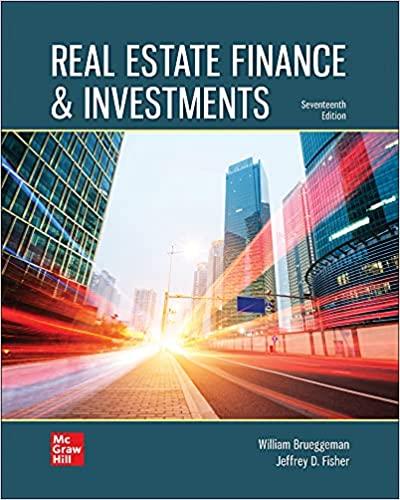Question
It is December 1, 2019, and Smiley Mirus has several debts she is considering consolidating into one mortgage, through a refinancing process. Firstly, Smiley has
| It is December 1, 2019, and Smiley Mirus has several debts she is considering consolidating into | |||||||||
| one mortgage, through a refinancing process. | |||||||||
| Firstly, Smiley has a mortgage on her house that was taken out on 3/1/15, with the | |||||||||
| mortgage being $154,600. The mortgage, payable in monthly installments of $794.86, | |||||||||
| is a 30 year mortgage at an annual interest rate of 4.625%. Today, 12/1/19, | |||||||||
| immediately after the 12/1/19 payment, the mortgage balance stands at $141,941. | |||||||||
| Secondly, Smiley has a home equity loan (a loan in which the value of the home | |||||||||
| is used as security to the holder). This loan was taken out on 4/1/15 in the amount of | |||||||||
| $38,600. This is a 15 year loan, at 4.375% annual interest, with monthly payments currently | |||||||||
| at $292.83. Unfortunately this equity loan has a 5-year "balloon" provision, which states that | |||||||||
| five years after origination of the loan (4/1/20) the bank will revise the interest rate on | |||||||||
| the remaining loan balance to the market interest rate in effect at that time. Also, after | |||||||||
| 4/1/20, the bank will revise the loan's interest rate annually, beginning 5/1/20. | |||||||||
| Today, December 1, 2019, the equity loan balance stands at $29,170. | |||||||||
| Smiley would like to consolidate both loans into one fixed rate mortgate, for two reasons. | |||||||||
| First, interest rates currently offered were extremely good. Second, the five-year balloon | |||||||||
| entails risk that Smiley does not want to contend with, due to the possibility of the interest | |||||||||
| rate increasing dramatically when the balloon triggers on 5/1/20. | |||||||||
| Smiley visited her local mortgage broker and was offered the following. | |||||||||
| ::Thirty year fixed rate mortgage, annual interest rate of 2.875%, with one point.* | |||||||||
| ::Thirty year fixed rate mortgage, annual interest rate of 3.175%, with zero points. | |||||||||
| ::Fifteen year fixed rate mortgage, annual interest rate of 2.375%, with two points. | |||||||||
| ::Fifteen year fixed rate mortgage, annual interest rate of 2.75%, with zero points. | |||||||||
| Costs to refinance and consolidate the existing loans into one mortgage total | |||||||||
| $4,300 for the 30 year mortgages, and $3,000 for the 15 year mortgages, not including points. | |||||||||
| These costs are added to the loan balance. | |||||||||
| Assume payments on the new mortgage will begin12/1/19. | |||||||||
| Prepare loan amortization schedules for the four above options, as well as for the | |||||||||
| original loans. Use a net present value approach in formulating your analysis. | |||||||||
| Remember, this is a cash outflow analysis and as such payback and internal rate of return | |||||||||
| cannot be calculated. Only net present value can be calculated. | |||||||||
| *a "point" is a fee paid for a superior interest rate, with one point amounting to one | |||||||||
| percent of the amount borrowed, two points are two percent of the amount borrowed, etc. | |||||||||
| This fee is added to the loan balance and included in the loan payments accordingly. | |||||||||
| 1) In your opinion, which of the above loan options, if any, should she adopt? | |||||||||
| 2) In answering #1, be sure to clearly explain the technique you used to determine your answer. Also | |||||||||
| Also thoroughly explain what your answer means. | |||||||||
| 3) Organize your work nicely, with appropriate page breaks. Your loan amortization schedules will | |||||||||
| be quite large covering several pages. I suggest you use the "Print titles" command to enable | |||||||||
| the column headings to appear on each page. Poorly formatted analyses will lose points. | |||||||||
Step by Step Solution
There are 3 Steps involved in it
Step: 1

Get Instant Access to Expert-Tailored Solutions
See step-by-step solutions with expert insights and AI powered tools for academic success
Step: 2

Step: 3

Ace Your Homework with AI
Get the answers you need in no time with our AI-driven, step-by-step assistance
Get Started


